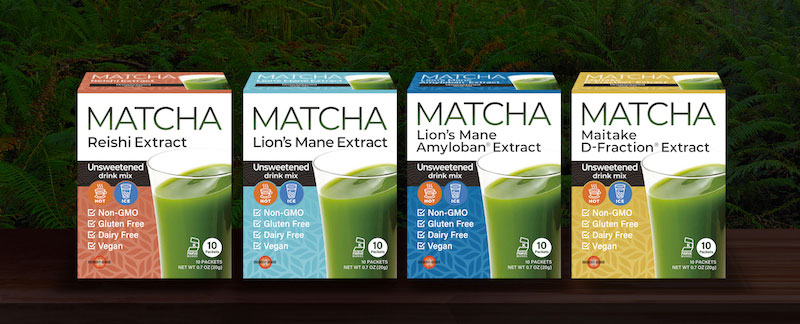Matcha Tea, the Ceremonial Green Tea
The Japanese tea ceremony, known as Chanoyu or Sado, is a cultural practice that emphasizes the preparation and serving of matcha, a powdered form of green tea, in a specific traditional Japanese style. The ceremony is a highly choreographed ritual that has been practiced for centuries, and is often seen as a way to cultivate inner peace, mindfulness, and appreciation of beauty. (Somewhat ironically, Green tea actually originated in China but came to Japan when two monks shared the seeds.)
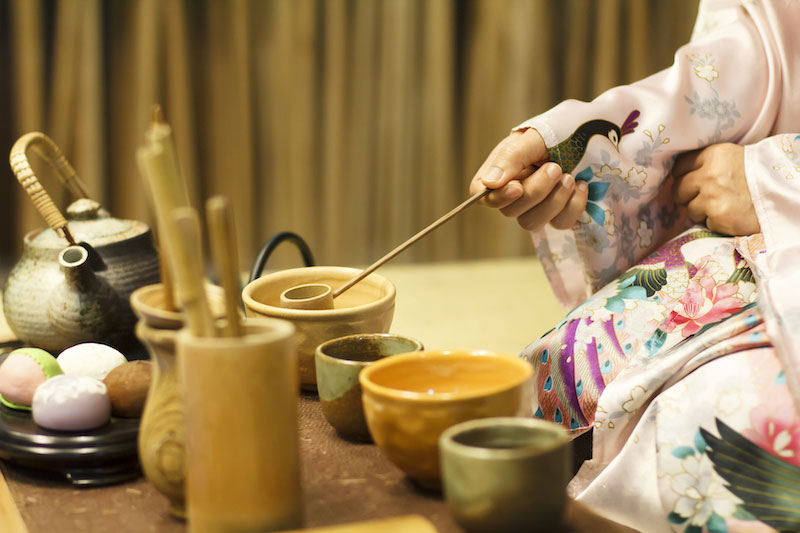 The tea ceremony typically takes place in a small tearoom, called a chashitsu, which is designed to create a peaceful and intimate atmosphere. The ceremony is performed by a host, or tea master, who is highly trained in the art of tea-making and etiquette. Guests are typically invited to the ceremony and are expected to follow certain rules and customs, such as wearing appropriate clothing and showing respect to the tea master. During the ceremony, the tea master prepares and serves the matcha to the guests in a specific order, using a variety of utensils and movements that are meant to be both aesthetically pleasing and functional. The guests are expected to savor the tea and appreciate its taste, as well as the beauty of the tea bowl and other utensils used in the ceremony. The Japanese tea ceremony is considered an important part of Japanese culture and is often seen as a way to express hospitality, respect, and gratitude. It is also an opportunity for people to connect with each other and with nature, as many of the rituals and customs are based on themes of harmony, simplicity, and appreciation of the natural world.
The tea ceremony typically takes place in a small tearoom, called a chashitsu, which is designed to create a peaceful and intimate atmosphere. The ceremony is performed by a host, or tea master, who is highly trained in the art of tea-making and etiquette. Guests are typically invited to the ceremony and are expected to follow certain rules and customs, such as wearing appropriate clothing and showing respect to the tea master. During the ceremony, the tea master prepares and serves the matcha to the guests in a specific order, using a variety of utensils and movements that are meant to be both aesthetically pleasing and functional. The guests are expected to savor the tea and appreciate its taste, as well as the beauty of the tea bowl and other utensils used in the ceremony. The Japanese tea ceremony is considered an important part of Japanese culture and is often seen as a way to express hospitality, respect, and gratitude. It is also an opportunity for people to connect with each other and with nature, as many of the rituals and customs are based on themes of harmony, simplicity, and appreciation of the natural world.
Green Tea
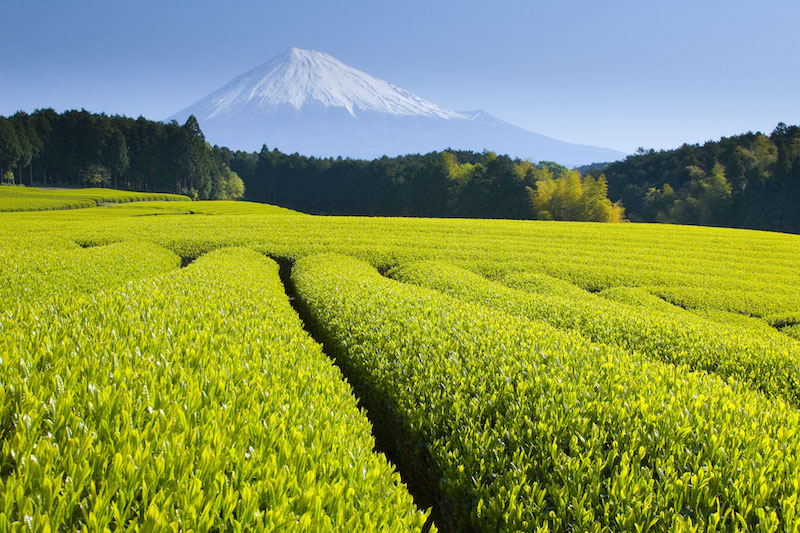 To understand Matcha we first need to look at Green tea. Green tea is a type of tea made from the leaves of the Camellia sinensis plant, which is native to China but is now grown in many parts of the world. Green, Black, Pu-erh, White, and Oolong are all made using this same plant, but black tea is fully fermented, and oolong tea is partially fermented, Pu-erh is fully fermented, and White is the least processed, while Green tea is made from leaves that have undergone minimal oxidation during processing. Green tea is known for its high content of antioxidants called catechins, which are believed to have various health benefits, including supporting heart and circulatory health, immune health, and brain health. It contains the balancing combo of caffeine and theanine, which can help improve mental alertness and reduce stress. It’s this combination of the two constituents that makes it possible to provide a “calm alertness”, rather than the solely stimulatory action that coffee provides.*
To understand Matcha we first need to look at Green tea. Green tea is a type of tea made from the leaves of the Camellia sinensis plant, which is native to China but is now grown in many parts of the world. Green, Black, Pu-erh, White, and Oolong are all made using this same plant, but black tea is fully fermented, and oolong tea is partially fermented, Pu-erh is fully fermented, and White is the least processed, while Green tea is made from leaves that have undergone minimal oxidation during processing. Green tea is known for its high content of antioxidants called catechins, which are believed to have various health benefits, including supporting heart and circulatory health, immune health, and brain health. It contains the balancing combo of caffeine and theanine, which can help improve mental alertness and reduce stress. It’s this combination of the two constituents that makes it possible to provide a “calm alertness”, rather than the solely stimulatory action that coffee provides.*
In Japan, Green tea is an important part of the country’s culture and is consumed as part of the traditional Japanese tea ceremony. In China, Green tea is often served as a symbol of hospitality and is an important part of daily life.
Green tea has been linked to numerous health benefits due to its high concentration of polyphenols, particularly catechins, which are a type of antioxidant. Some of the potential health benefits of green tea are:
- Cardiovascular health and function: Several studies have shown that drinking Green tea supports healthy heart function, including supporting healthy levels of LDL cholesterol (the “bad” cholesterol) and triglycerides, while increasing levels of HDL cholesterol (the “good” cholesterol) as well as relaxing the blood vessels.*
- Support healthy immune function: Research suggests that Green tea may significantly enhance a healthy immune and inflammatory response. The polyphenols in tea are particularly supportive of healthy immune function.*
- Improved brain function: Green tea contains caffeine and theanine, which have been shown to improve cognitive function and mental alertness. A 36 study meta-analysis found that Green tea significantly helped with cognition and that the more one drank the better the benefits.*
- Supports healthy blood sugar levels: Studies have suggested that drinking Green tea may help by improving insulin sensitivity and glucose tolerance.*
- Improved dental health: The antibacterial properties of Green tea may help reduce the risk of cavities, gum disease, and bad breath.*
- Potent antioxidant: It contains a number of active compounds that exhibit free radical fighting activities. The antioxidants are responsible for much of Green tea’s protective actions. One of its antioxidant benefits was reducing skin damage from the sun.*
- Weight loss: Some studies have suggested that the catechins in Green tea may help increase metabolism and aid in weight loss. The caffeine and EGCG, a key polyphenol found in tea can have a powerful effect on metabolism. A review of 11 studies using Green tea found it reduced body weight along with helping maintain the weight loss.*
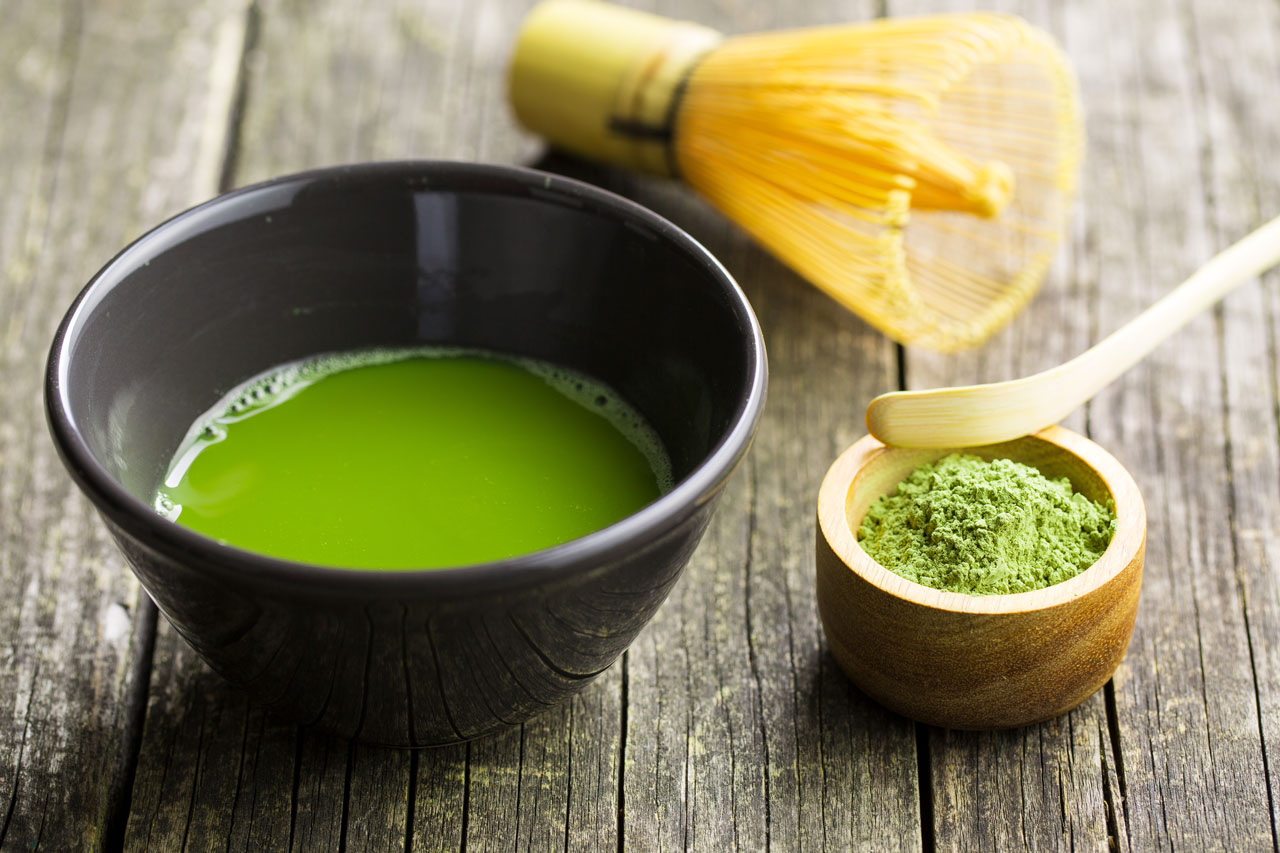
Matcha
Matcha is a type of powdered Green tea that is made from shade-grown tea leaves. The leaves are carefully selected and then ground into a fine powder using traditional stone mills. This process takes several hours to produce just a small amount of matcha powder. Matcha has a rich history in Japanese culture, where it has been consumed for centuries as part of traditional tea ceremonies. Only recently has Matcha come to be enjoyed around the world for its unique taste, vibrant green color, and potential health benefits.
 Matcha is known for its higher concentrations of antioxidants, particularly catechins, which have been linked to various health benefits, including cardiovascular, immune, and brain health disease. It also contains higher levels of caffeine and theanine than Green tea, which can help improve mental alertness and reduce stress.*
Matcha is known for its higher concentrations of antioxidants, particularly catechins, which have been linked to various health benefits, including cardiovascular, immune, and brain health disease. It also contains higher levels of caffeine and theanine than Green tea, which can help improve mental alertness and reduce stress.*
When selecting Matcha, it is important to choose high-quality, ceremonial-grade Matcha that is vibrant green in color and has a smooth, sweet flavor. Lower-quality Matcha may be dull in color and have a bitter taste. The vibrant green color is one of the best ways to differentiate quality Matcha.
Green tea and Matcha both have demonstrated a range of benefits due to their high concentration of antioxidants and other beneficial compounds. Since Matcha contains all the constituents that Green tea contains, only in higher quantities, it is reasonable to assume that it will offer the same benefits, maybe even more so, as does Green tea.
Green vs Matcha

Green tea and Matcha come from the same plant, Camellia sinensis, but they are processed and consumed differently. Green tea is made from the leaves of the Camellia sinensis plant that are dried and then steeped in hot water. The leaves can be whole or ground into a powder, but they are not finely ground as they are with Matcha. Green tea leaves are typically steeped for a few minutes and then discarded. Matcha, on the other hand, is made from shade-grown tea leaves that have the stems and veins removed and are then finely ground into a powder. The whole tea leaf is consumed, rather than just the brewed water, making matcha more concentrated in nutrients and antioxidants than regular green tea. Matcha is traditionally prepared by whisking the powder with a bamboo whisk in hot water until a frothy mixture is created. Because of its concentrated form Matcha has a more intense flavor, more caffeine, theanine, and antioxidants, as well as an overall more nutritious profile than Green tea.
Matcha also contains higher levels of the calming amino acid theanine which is responsible for Green tea and Matcha having a less stimulatory reaction versus coffee. Theanine has been shown to promote the release of the calming and relaxing neurotransmitters, GABA, dopamine, and serotonin. It has also been found to improve concentration, alertness, and memory.*
Much of the research on Green tea and Matcha has focused on the promising polyphenol called EGCG. Here again Matcha contains way higher levels, in fact, assays have found that it contains up to 137 times more EGCG than Green tea.
To recap, in terms of health benefits, both Green tea and Matcha contain high levels of antioxidants (Matcha has 10X higher levels) and polyphenols that have been linked to various health benefits, including cardiovascular health, improved brain function, and immune support with Matcha having higher levels.* Overall, the primary difference between Green tea and Matcha is their form and the way they are consumed.
Our New Matcha Mushroom Blends
Go green the healthy way with Mushroom Wisdom’s new line of Matcha and Mushroom tea blends. We have combined these two powerful, ancient, health allies into our new line of powdered drink mixes. Matcha is a special typed of Green tea, often referred to as “ceremonial Green tea.” Since Matcha is produced as a powder and not strained as conventional teas it offers the fullest range of constituents. This allows for all the nutritional benefits to be present, so you lose none of the health supporting constituents. So our Matcha tea blends come in individual easy-to-use packets that you simply dissolve in ideally hot water.
Our organically grown Matcha is sourced from the oldest tea company in Japan, Yamamotoyama, dating back to its founding in 1690. The Yamamoto family founded the company, and it is still family owned and operated. In fact, the Yamamoto family even operates the first of its kind tea shop, located in the same spot for over 330 years.
In creating this new line of drink mixes, Mushroom Wisdom brings together two long-used traditional health supporting allies, functional mushrooms and Matcha tea.* Each blend contains the vibrant green Matcha tea powder with mushrooms extracts, including Super Reishi, Super Lion’s Mane, and the proprietary extracts, Lion’s Mane Amyloban®, and Maitake D-fraction®. An exciting and promising new area of research, recently uncovered by researchers, involves Matcha’s potential to induce autophagy.* Autophagy is how the body rids itself of old and damaged cells, allowing for renewal.
This line of four blends combines high quality Matcha with two Super mushroom extracts, Lion’s Mane, for its brain, nerve, mood and memory support, or Reishi, the ultimate tonic for overall health and vitality.* We have also combined the Matcha with two powerful, unique extracts, Maitake D-fraction®, for its well-known immune support, or Lion’s Mane Amyloban®, a one-of-a-kind research-supported extract of Lion’s Mane mushroom to maximize its brain and nerve benefits.*
 Because of the care and processes involved in producing Matcha it offers three times higher anti-oxidant levels as well as higher levels of chlorophyll and the health supporting polyphenols.* With your first sip you can see, feel, and taste the Matcha difference. Go green with Mushroom Wisdom’s Matcha mushroom tea blends.
Because of the care and processes involved in producing Matcha it offers three times higher anti-oxidant levels as well as higher levels of chlorophyll and the health supporting polyphenols.* With your first sip you can see, feel, and taste the Matcha difference. Go green with Mushroom Wisdom’s Matcha mushroom tea blends.
